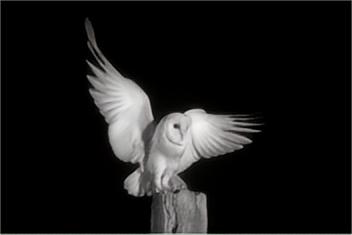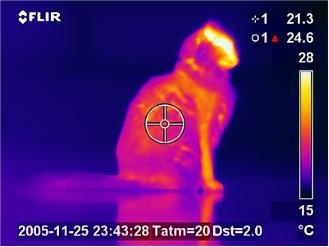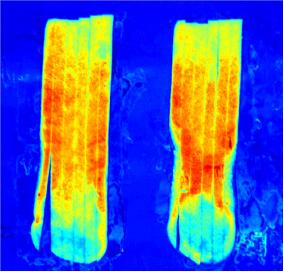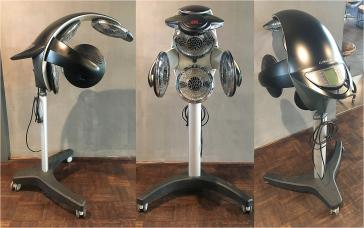一、Commonly used sub-division scheme of infrared
One commonly used sub-division scheme of infrared (IR) radiation is based on the wavelength range. The IR spectrum is generally divided into the following regions:
Near-infrared (NIR): This region ranges from approximately 700 nanometers (nm) to 1.4 micrometers (μm) in wavelength. NIR radiation is often used in remote sensing, fiber optic telecommunication because of low attenuation losses in the SiO2 glass (silica) medium. Image intensifiers are sensitive to this area of the spectrum; examples include night vision devices such as night vision goggles. Near-infrared spectroscopy is another common application.
Short-wavelength infrared (SWIR): Also known as the “shortwave infrared” or “SWIR” region, it extends from about 1.4 μm to 3 μm. SWIR radiation is commonly utilized in imaging, surveillance, and spectroscopy applications.
Mid-wavelength infrared (MWIR): The MWIR region spans from approximately 3 μm to 8 μm. This range is frequently employed in thermal imaging, military targeting, and gas detection systems.
Long-wavelength infrared (LWIR): The LWIR region covers wavelengths from around 8 μm to 15 μm. It is commonly used in thermal imaging, night vision systems, and non-contact temperature measurements.
Far-infrared (FIR): This region extends from approximately 15 μm to 1 millimeter (mm) in wavelength. FIR radiation is often used in astronomy, remote sensing, and certain medical applications.
Wavelength range diagram
NIR and SWIR together is sometimes called “reflected infrared”, whereas MWIR and LWIR is sometimes referred to as “thermal infrared”.
二、Applications of infrared
Night vision
Infrared (IR) plays a crucial role in night vision equipment, enabling the detection and visualization of objects in low-light or dark environments. Traditional image intensification night vision devices, such as night vision goggles or monoculars, amplify the available ambient light, including any IR radiation present. These devices use a photocathode to convert incoming photons, including IR photons, into electrons. The electrons are then accelerated and amplified to create a visible image. Infrared illuminators, which emit IR light, are often integrated into these devices to enhance visibility in complete darkness or low-light conditions where ambient IR radiation is insufficient.
Low light environment
Thermography
Infrared radiation can be used to remotely determine the temperature of objects (if the emissivity is known). This is termed thermography, or in the case of very hot objects in the NIR or visible it is termed pyrometry. Thermography (thermal imaging) is mainly used in military and industrial applications but the technology is reaching the public market in the form of infrared cameras on cars due to greatly reduced production costs.
Thermal imaging applications
Infrared radiation can be used to remotely determine the temperature of objects (if the emissivity is known). This is termed thermography, or in the case of very hot objects in the NIR or visible it is termed pyrometry. Thermography (thermal imaging) is mainly used in military and industrial applications but the technology is reaching the public market in the form of infrared cameras on cars due to greatly reduced production costs.
Thermographic cameras detect radiation in the infrared range of the electromagnetic spectrum (roughly 9,000–14,000 nanometers or 9–14 μm) and produce images of that radiation. Since infrared radiation is emitted by all objects based on their temperatures, according to the black-body radiation law, thermography makes it possible to “see” one’s environment with or without visible illumination. The amount of radiation emitted by an object increases with temperature, therefore thermography allows one to see variations in temperature.
Hyperspectral imaging
A hyperspectral image is a “picture” containing continuous spectrum through a wide spectral range at each pixel. Hyperspectral imaging is gaining importance in the field of applied spectroscopy particularly with NIR, SWIR, MWIR, and LWIR spectral regions. Typical applications include biological, mineralogical, defence, and industrial measurements.
The hyperspectral image
Thermal infrared hyperspectral imaging can be similarly performed using a thermographic camera, with the fundamental difference that each pixel contains a full LWIR spectrum. Consequently, chemical identification of the object can be performed without a need for an external light source such as the Sun or the Moon. Such cameras are typically applied for geological measurements, outdoor surveillance and UAV applications.
Heating
Infrared (IR) radiation can indeed be used as a deliberate heating source in various applications. This is primarily due to the ability of IR radiation to directly transfer heat to objects or surfaces without significantly heating the surrounding air. Infrared (IR) radiation can indeed be used as a deliberate heating source in various applications. This is primarily due to the ability of IR radiation to directly transfer heat to objects or surfaces without significantly heating the surrounding air.
The heating source
Infrared radiation is widely used in various industrial heating processes. For example, in manufacturing, IR lamps or panels are often employed to heat materials, such as plastics, metals, or coatings, for curing, drying, or forming purposes. IR radiation can be precisely controlled and directed, allowing for efficient and rapid heating in specific areas.
Post time: Jun-19-2023








